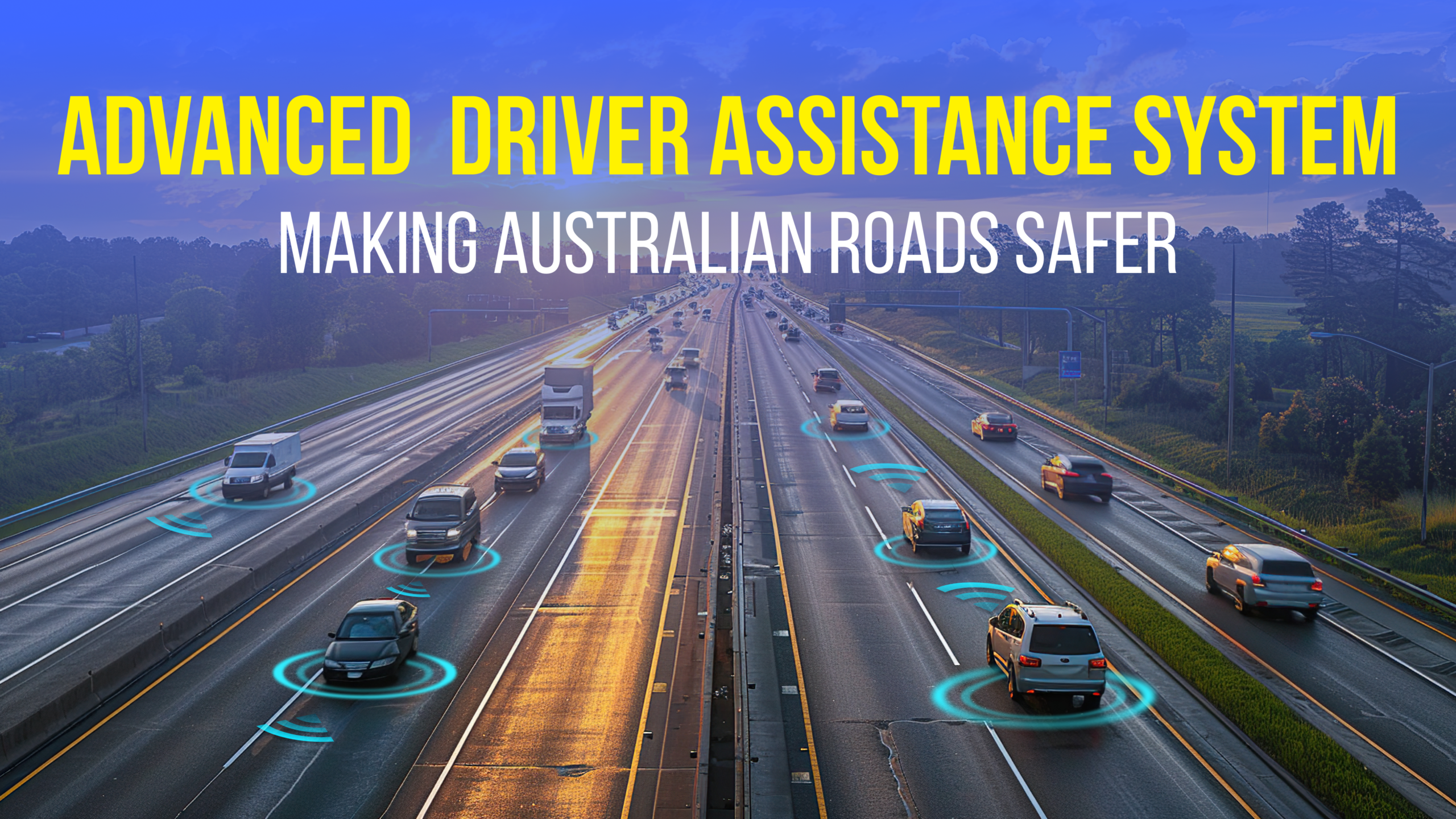ADAS Driving: Making Australian Roads Safer and Fleets Smarter


The Increasing Relevance of ADAS in Australia
With a market value of USD 1.08 billion in 2022, Australia’s ADAS market is expected to grow to USD 2.38 billion by 2030, driven by government safety regulations and consumer demand for safer vehicles ( Markets and Data ). This growth isn’t surprising given Australia’s unique driving challenges. From crowded urban areas like Sydney and Melbourne to remote, rural roads in the Outback, Australian drivers face a wide variety of road conditions that require constant attention. ADAS reduces the driver’s workload by automating important functions such as braking, staying in the correct lane, and maintaining a safe speed.
How ADAS Is Changing the Game
ADAS uses a combination of sensors, cameras, and algorithms to assist drivers, improving their response time to hazards and reducing the likelihood of accidents. Key ADAS features include:
- Adaptive Cruise Control: This technology adjusts the vehicle’s speed based on the traffic flow, maintaining a safe distance from other vehicles. It’s particularly useful on Australia’s long, straight highways, where maintaining focus can be a challenge.
- Lane-Keeping Assist: A critical feature for long-haul drivers, this system ensures the vehicle stays within its lane, reducing the risk of drifting due to fatigue or distraction—a common issue on Australia’s vast, open roads.
- Automatic Emergency Braking: This system detects potential collisions and applies the brakes to avoid or mitigate the impact, a crucial feature on both crowded urban streets and rural roads, where wildlife can unexpectedly cross paths with vehicles.
ADAS and Fleet Management: A Powerful Combination
Fleet operators in Australia are quickly realizing the benefits of ADAS, particularly when integrated with advanced fleet management software. By combining ADAS data with real-time vehicle tracking and driver performance monitoring, fleet managers can gain unprecedented insights into the safety and efficiency of their operations.
For example, there are powerful tools for fleet management which allows fleet managers to receive instant notifications if a vehicle’s ADAS system detects dangerous driving behavior, such as speeding or harsh braking. This data can then be used to improve driver training, reduce accident rates, and lower insurance premiums. Additionally, blind spot detection and traffic sign recognition features provide drivers with the extra visibility they need, particularly when operating in heavy traffic or unfamiliar areas.
ADAS in Urban and Rural Australia
Australia’s diverse geography means that ADAS must be adaptable to a wide range of driving conditions. In cities like Brisbane and Perth, traffic sign recognition helps drivers navigate busy streets by alerting them to speed limits and other important road signs. This is especially useful for commercial drivers who frequently operate in multiple cities, where traffic laws can vary.
In rural areas like Western Australia, where long stretches of road and fatigue are common, lane-keeping assist and adaptive cruise control help drivers maintain focus during long hauls. These features reduce the risk of accidents caused by drowsy driving, which is a significant problem on Australia’s isolated highways.
Why ADAS Matters to Australia’s Fleet Industry
Australia’s commercial vehicle market is booming, with a projected annual growth rate of 5.93% between 2023 and 2030(Markets and Data). The transport and logistics sectors are particularly critical to the country’s economy, given Australia’s geographic isolation and reliance on road transport for moving goods across the continent. For fleet operators, the integration of ADAS with fleet management software is a game-changer. With real-time data from ADAS systems, fleet managers can improve route planning, ensure safety compliance, and lower fuel usage.
In industries like mining and agriculture, where vehicles often operate in hazardous conditions, ADAS can significantly reduce accidents. Features like blind spot detection and automatic emergency braking are essential in preventing collisions, both on public roads and within worksites.
The Future of ADAS in Australia
As Australia continues to modernize its road infrastructure and embrace new technologies, ADAS will play a pivotal role in shaping the future of transportation. The push for greener vehicles, combined with stricter safety regulations, will likely accelerate the adoption of ADAS across both personal and commercial vehicles.
Fleet operators who invest in ADAS now will not only improve the safety of their drivers but also see significant cost savings through reduced accident rates and lower maintenance costs. With systems like Trakzee offering seamless integration of ADAS data, the future of fleet management in Australia looks safer, smarter, and more efficient.






